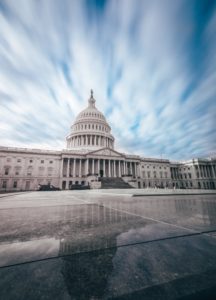The Covid-19 pandemic did not stop law enforcement officers from patrolling areas by car, motorcycle or even foot, directing traffic during signal malfunctions or accidents, assisting in processing crimes, or executing other duties required to protect and serve their community. While these might be considered routine activities, they still put officers at high risk of exposure to the Covid-19 virus. Likewise, new requirements and responsibilities such as responding to complaints for shelter-in-place violations have increased face-to-face interactions, as well as Covid-19 exposure, for law enforcement personnel.

But even after state and municipal shelter-in place restrictions end, exposure risks will persist. According to the Centers for Disease Control and Prevention (CDC), communities will be dealing with the virus through the summer months, with a potential second wave coming in the Fall. That means that agencies and their officers will need to maintain their diligence for the foreseeable future.
Law Enforcement Technology that Support Agency Workforce Challenges
Overcoming this pandemic will take resilience and time, but it is important for us to tackle these new challenges with innovative solutions. With the abiding impact of Covid-19, public safety agencies need to determine the most efficient strategies for controlling its effect and managing fluctuations in workforce availabilities. While dealing with these peaks and valleys isn’t new to some public safety agencies, it’s safe to say that most have not experienced limited workforce challenges that could last several weeks, if not months.
The Benchmark Covid Impact Management System (CIMS) was developed to address these challenges. With CIMS, public safety agencies have a single-source, turnkey software platform — designed to report and track all Covid-related incidents in one unique, easy-to-administer and security-protected location. CIMS provides agencies essential reports which include Potential Exposure, Sick Leave, Test Tracker, and Return to Service.
According to the National Police Foundation COVID-19 Law Enforcement Impact Dashboard, nearly every state has had a law enforcement officer exposed to the virus.  Our Potential Exposure Report is completed when a police officer or department staff member has reported that they may have been exposed to the Covid-19 virus. It includes:
Our Potential Exposure Report is completed when a police officer or department staff member has reported that they may have been exposed to the Covid-19 virus. It includes:
- Definitions/guidelines of exposure and close contact
- Date, time, location and nature of potential exposure
- Name and contact information of individual exposed
- Description of any health-related symptoms since contact
- Recommendations for further actions
The Sick Leave Report should be used when a department employee has officially gone on sick leave due to exposure, and provides data on:
- Date leave effective, symptoms and Covid-19 related queries
- Results of any medical tests conducted during sick leave
- List of contacts within and outside of the agency
- Information on specifics of quarantine, if applicable
- Details of any future work-related conflicts due to leave
The CIMS Test Tracker Report provides relevant information on any Covid-19 test taken by an officer or staff member. It includes:
- Reason for taking test and details of exposure, if applicable
- Date, time, type and location of test
- Symptoms exhibited at time of test and following test
- Results reported for the Covid-19 test
Lastly, the Return to Service Report should be completed and reviewed before an officer can return to work following a sick leave, and summarizes:
- All symptoms reported since beginning of sick leave
- Answers to all Covid-19 related inquiries
- Current condition of employee on sick leave
- Requirements of return and anticipated date of return
- Review and recommendations for return to service
While the COVID-19 pandemic has formed new obstacles for public safety, the Benchmark Covid Impact Management System provides agencies the information they need to manage their workforce efficiently and effectively. To learn more about CIMS, as well as view a demo of the system, visit https://www.benchmarkanalytics.com/cims/.





 Legitimacy is maintained when the group deciding and enforcing the rules plays by them as well. They must be impartial and objective in upholding the law. If the rule-bound population detects special treatment or bias, especially the self-serving kind, its attitude changes from acceptance to resistance, resentment, and, occasionally, revolution. (Here’s looking at you,
Legitimacy is maintained when the group deciding and enforcing the rules plays by them as well. They must be impartial and objective in upholding the law. If the rule-bound population detects special treatment or bias, especially the self-serving kind, its attitude changes from acceptance to resistance, resentment, and, occasionally, revolution. (Here’s looking at you,  Paired with institutional theory, which defines legitimacy as “a generalized perception or assumption that the actions of an entity are desirable, proper, or appropriate within some socially constructed system of norms, values, beliefs, and definitions.”
Paired with institutional theory, which defines legitimacy as “a generalized perception or assumption that the actions of an entity are desirable, proper, or appropriate within some socially constructed system of norms, values, beliefs, and definitions.” These devices serve a dual purpose: collecting evidence and increasing transparency between law enforcement agencies and their communities. By capturing video of arrests and other interactions, both leadership and civilians can literally see how officers conduct themselves. These devices are impartial by nature – a camera on its own can’t operate with bias towards officers or civilians. BWC’s help move a subjective experience into the realm of objective by opening a contested incident to the oversight of many, diverse reviews.
These devices serve a dual purpose: collecting evidence and increasing transparency between law enforcement agencies and their communities. By capturing video of arrests and other interactions, both leadership and civilians can literally see how officers conduct themselves. These devices are impartial by nature – a camera on its own can’t operate with bias towards officers or civilians. BWC’s help move a subjective experience into the realm of objective by opening a contested incident to the oversight of many, diverse reviews.